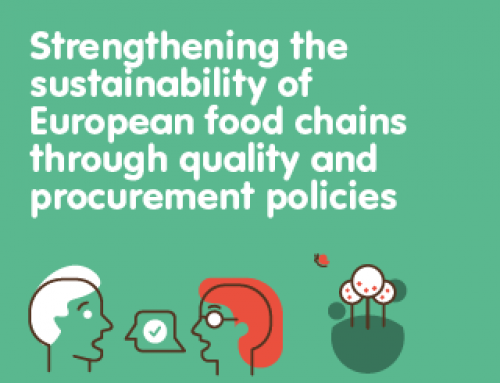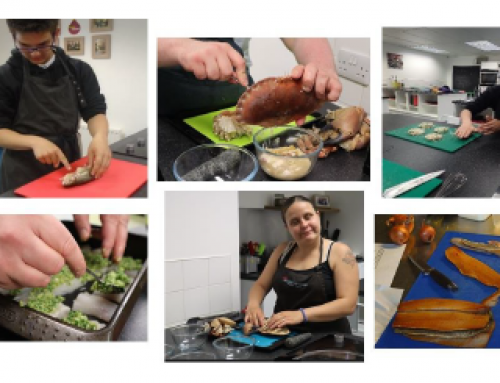Responsible Partner: SIFO – OsloMet (HIOA)
Authors: Vilde Haugrønning, Virginie Amilien and Gun Roos
Date of Publication: December 2018
This report presents work that is part of the European Strength2Food (S2F) EU2020 project “Strengthening European Food Chain Sustainability by Quality and Procurement Policy”. The report, which focuses on results from ethnographic fieldwork in six households in Norway and constitutes the Norwegian “country report”, is part of the S2F qualitative consumer analysis across seven European countries. This research aims to contribute to a better understanding of consumers’ everyday food practices in connection with Food Quality Schemes (FQS) and sustainable food chains. Emphasis is placed on identifying and understanding potential gaps between consumers’ stated valuation and their everyday food consumption, including planning, purchasing, using and disposing of food. A main question to be discussed is: How and in which ways are FQS present or absent in everyday food consumption?
The main methodology was ethnographic fieldwork combined with semi-structured interviews, desk study research and dialogic conversations. Six households were selected based on two main dimensions: interest in FQS and location (rural/urban). The households were visited three times across different seasons between March 2017 and March 2018. A semi-structured interview on recognition, knowledge, opinion and use of FQS was included as part of the first visit when households were presented with 8-10 different food products with FQS labels. The following FQS labels were included in the Norwegian study: Protected Designations of Origin (PDO); Protected Geographical Indication (PGI); Traditional Speciality Guaranteed (TSG); Norwegian versions of PDO, PGI and TSG (Beskyttede Betegnelser – BB); Nyt Norge (NN); Norsk Spesialitet (NS); EU organic: Debio Økologisk; and the Keyhole. The ethnographic fieldwork involved observations documented by video filming or audiorecording in the homes, grocery stores and food markets, and households documenting their planning, purchasing, using and disposal of FQS with photos and notes. Social practice theory was used as a methodological tool to emphasize the meaning of routines, time, material devises and infrastructure both during fieldwork and analysis.
There was a tendency among the informants to regard quality food labels, especially PDO, PGI and TSG, as uninteresting or invisible. However, food practices linked to FQS varied from label to label. Some labels (including the organic labels, Nyt Norge and fair trade) seemed to be well known and interwoven with household food practices through routines, whereas PDO, PGI, TSG and BB were seldom present neither in dialogues and justifications nor in practices. Food provisioning in the participating households was a mechanical and routinised food practice and thus made the role of less known FQS labels (that demand X Quality labels lost in everyday food consumption reflection) insignificant in the food shopping situation. Value-action gaps were identified. For example, local, place and sustainability were important to the households although these values did not always seem to be manifested in their food practices. Moreover the informants seemed to ignore many of the labels when purchasing food.
However, there is not necessarily a gap between what people say and do, but we understand it as a complementarity because food consumption is complex. Differences between sayng and doings are then related to contexts and spheres that coexist. In the domestic sphere our informants emphasized how quality and sustainability are linked to tradition, social networks and everyday objects, and thus in this sphere FQS labels have little place and interest for informants. On the other hand, in the market sphere, in which informants have to make choices, food quality labels can quickly be a basic reference. Complications with FQS seem to arrive if FQS do not respond to the compromises and priorities that are necessary components of everyday life and do not account for the complex and dynamic nature of food provisioning. Even to our informants who wanted to support local farmers or who were interested in cultural heritage, FQS logos – especially PDO, PGI, TSG and BB – were not perceived as relevant and seemed mostly invisible.






